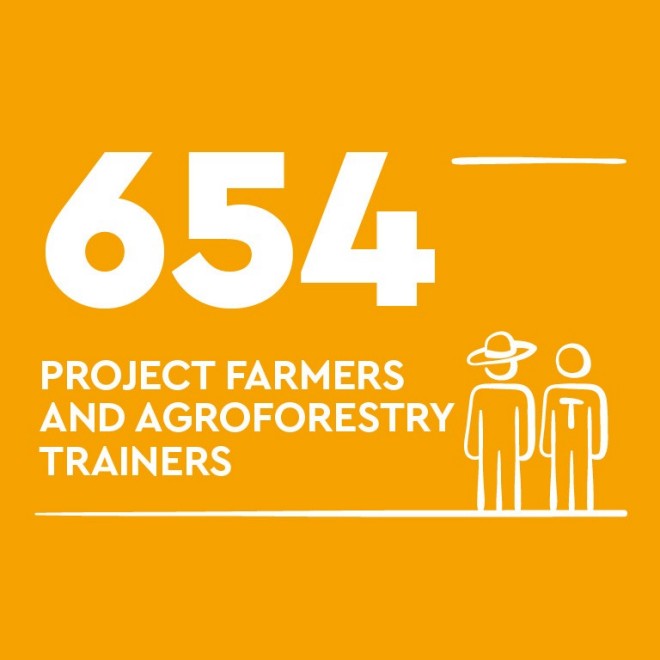
Within the scope of our commitment to sustainability, we want to take our expertise and our resources straight to the source – for example, to the countries where our various raw materials are grown. Dynamic agroforestry or DAF is a particularly promising approach to this endeavour (Agroforestry Policy).
In many places, cocoa is grown as a monoculture. Farmers choose this approach in order to generate higher yields and, as such, higher incomes. After a few years of monoculture farming, however, the practice has a negative impact on soil fertility: the cocoa plants become more vulnerable to pests and disease. As a result, yields decrease. Farmers seek to make up for the deficiency using mineral fertilisers and pesticides, but this does not have the desired effect in the medium and long term. Instead, it harms the environment.
DAF offers a solution. It involves the mixed cultivation of cocoa, fruit trees and timber trees, which mirrors the original rainforest habitat of cocoa. Cocoa can grow in combination with annual food crops such as corn and cassava, with perennials such as bananas and mangoes, or with precious wood trees such as mahogany and cedar. The various plants benefit from one another: tall-growing ones provide shade, and cocoa grows better in the shady undergrowth. Plants with high nutrient requirements receive support from neighbouring plants that provide nutrients. Organic matter produced during this cultivation method remains on the ground and becomes natural fertiliser.


DAF offers cocoa farmers additional advantages on top of consistently high crop yields. The products of food crops such as corn, beans and avocados generate additional income on local markets and enable farmers to become more self-sufficient. Precious wood trees can support their retirement: after 20 or 30 years, they are felled and sold once a replacement has been planted. As such, DAF significantly increases the incomes and living standards of farmers while combating social issues such as child labour, malnutrition and urbanisation. And nature wins, too: in DAF, deforested areas are reforested. Biodiversity on plantations increases, and pollinating insects and other animals return. The planted timber trees store water and protect the soil from erosion. They also absorb CO₂, thus protecting the climate.



Specialist expertise is required to utilise the full potential of DAF. That is why HALBA’s DAF projects are planned for multiple years, and selected farmers are intensively trained in the methods of agroforestry. The trained farmers can then become trainers themselves, passing on their knowledge to other farmers around them. In a DAF project, they receive the required plant material for their plots for free. This includes seedlings for cocoa trees, timber trees and fruit trees plus seeds for staple foods. In addition, they are given tools and technical support for sustainable, mixed cocoa cultivation. Ideally, this enables them to take ownership of the local projects in the long term.
HALBA has already implemented DAF projects in Ecuador, Ghana, Honduras and Madagascar. They are run and co-funded in collaboration with other partners. Our goal is to increase the amount of cocoa beans grown from DAF continuously and, by doing so, make a contribution to ecological and social sustainability.

Dynamic agroforestry is not limited to cocoa. In our supply chains, this approach to mixed cultivation has also proven a successful and sustainable method of growing cashews and mangoes in Burkina Faso and coconut palms in Ivory Coast. We plan to explore its viability in the temperate zones where hazelnuts and berries are grown.


